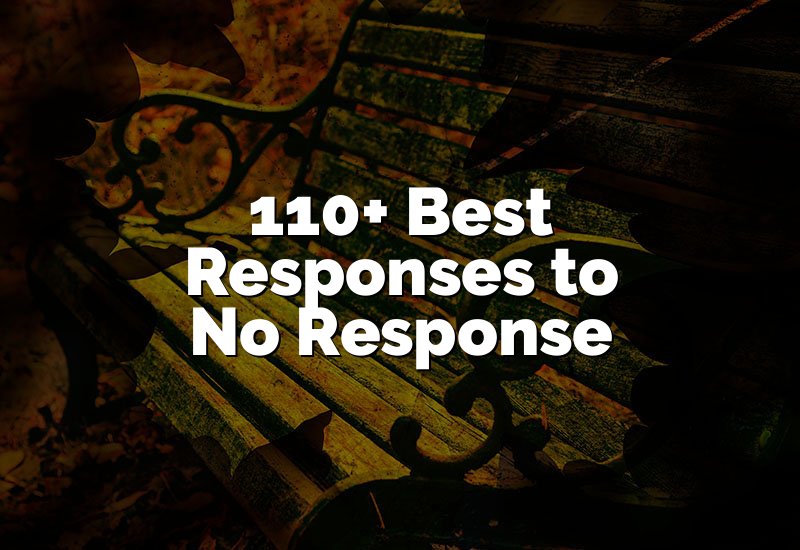When someone asks you what you think of them, it can feel tricky or awkward. You might want to be honest, kind, or funny, but not hurt their feelings. Sometimes they ask out of curiosity, or they want to see if you like them. In this article, we will explore easy ways to respond, like being honest, giving compliments, or even making it playful with examples.
1. Be Honest but Kind
Being honest is always a good way, but you need to be kind so you do not hurt anyone. You can share your true thoughts with gentle words. Honesty builds trust and makes the person feel respected. Remember to focus on their good qualities and what you appreciate about them. This way, your answer will feel real and friendly. Avoid being too negative or critical, even if you feel something is wrong. The goal is to give feedback without hurting feelings.
- You are a very thoughtful person
- I like how you always listen to others
- You make people feel comfortable around you
- I enjoy spending time with you
- You have a great sense of humor
- I think you are really creative
- You are smart and kind
- I like your positive energy
- You have a good heart
- You are very dependable
2. Give a Compliment
Compliments are an easy and safe way to respond. They make the person feel good and happy. You can focus on their personality, talents, or appearance. Even small compliments can make a big difference. Make sure your compliment is sincere so it feels real. Avoid exaggeration because it may seem fake. Compliments show that you notice good things about them and value them as a person. You can also combine compliments with honesty for a warmer response.
- You have a beautiful smile
- I love your sense of style
- You are very talented
- You have a kind heart
- I admire your confidence
- You always know what to say
- You are very funny
- I enjoy your company
- You are very creative
- You make everyone feel welcome
3. Be Playful and Funny
Sometimes humor is the best way to answer. Being playful makes the conversation light and fun. It can show that you are comfortable with the person. You can make a small joke or a funny comment about yourself or them. Humor works well if you know the person is okay with jokes. Avoid making jokes that may hurt feelings or feel mean. A playful answer can create laughter and make your friendship stronger.
- I think you are secretly a superhero
- You are the best at making people laugh
- You have the patience of a saint
- I think you might be an alien
- You are way cooler than me
- I think you are a little troublemaker
- You are like a human sunshine
- You always know how to have fun
- I think you are full of surprises
- You are a very mysterious person
4. Be Honest About Your Feelings
Sharing how you feel about them is personal and special. You can talk about friendship, respect, or love. This answer shows that you care about your relationship. Be careful to express your feelings clearly so there is no misunderstanding. Avoid saying negative things about their personality. You can be honest without criticizing them. Your feelings are important, and sharing them makes your answer warm and meaningful.
- I feel happy when I am around you
- I respect you a lot
- I trust you completely
- I admire your dedication
- I like our conversations
- I feel safe talking to you
- I enjoy your company very much
- I feel inspired by you
- I think you are amazing
- I feel lucky to know you
5. Give a Neutral Response
If you are unsure or want to stay careful, a neutral answer is safe. It does not hurt feelings but still shows you are polite. Neutral responses work when you do not know the person well or do not want to share deep feelings yet. You can keep it friendly without being too personal. Neutral answers are simple and easy to use in casual situations.
- I like getting to know you
- You are interesting to talk to
- I enjoy hanging out with you
- You seem like a good person
- I think you are nice
- I like your company
- You seem friendly
- You are easy to talk to
- I enjoy our chats
- I think you are fun to be around
6. Use a Thoughtful Response
Thoughtful responses show that you care about the person and their feelings. It means paying attention to them and choosing your words carefully. You can notice small details about their personality or behavior. A thoughtful answer makes the other person feel valued and appreciated. It can deepen your connection and build trust. Always be gentle with your words, even if you want to share something serious.
- I notice how you help others
- You always think about people’s feelings
- I like how dedicated you are
- You are very patient with everyone
- I admire your honesty
- You always make people feel important
- I notice your creativity
- You are very reliable
- I appreciate your kindness
- I like how you stay calm in tough situations
7. Be Honest About Growth Areas
Sometimes people ask because they want feedback. You can gently mention things they can improve. The key is to be honest but kind. Focus on one or two small areas, not everything. Use encouraging words so it feels supportive. This response can help them grow and shows you care about their development. Avoid negative labels or harsh words.
- You can be more patient sometimes
- Try to listen more in conversations
- You can focus more on details
- Try not to worry too much
- Be more confident in yourself
- You can work on time management
- Try to express your feelings more
- Be careful with your tone sometimes
- You can ask for help when needed
- Practice being more positive
8. Give a Compliment About Skills
Complimenting skills is a meaningful way to answer. It shows you notice their talents and abilities. Skills can be related to work, hobbies, or personal strengths. This answer is encouraging and motivating. People love to hear that their efforts are seen and valued. Focus on their best skills and how they use them. It makes your response feel real and thoughtful.
- You are really good at drawing
- I admire your writing skills
- You are great at solving problems
- You are excellent at organizing
- I like how you play music
- You are good at cooking
- I think you are great at sports
- You have amazing leadership skills
- You are very good at learning new things
- I like how you teach others
9. Be Honest About Personality Traits
Talking about personality traits shows you notice who they really are. You can focus on positive traits to make them feel good. This type of response is personal and thoughtful. Avoid focusing on negative traits unless they ask for feedback. Mention traits that you appreciate or admire. Personality compliments can make someone feel confident and respected.
- You are very kind
- You are funny
- You are caring
- You are smart
- You are patient
- You are honest
- You are loyal
- You are creative
- You are confident
- You are helpful
10. Give a Simple Answer
Sometimes keeping it simple is best. Short answers are easy, clear, and safe. A simple response can still be meaningful and kind. It works well when you are in a casual conversation or do not want to overthink your answer. Even one or two sentences can make the other person happy.
- I like you
- You are nice
- You are fun
- I enjoy our talks
- You are great
- I like spending time with you
- You are friendly
- You are smart
- I like your energy
- You are amazing
Response Type Table
| Response Type | Description | Example Sentences |
|---|---|---|
| Honest but Kind | Truthful with gentle words | You are a very thoughtful person |
| Compliment | Focus on positive traits | You have a beautiful smile |
| Playful and Funny | Light and humorous | I think you are secretly a superhero |
| Honest About Feelings | Share personal feelings | I feel happy when I am around you |
| Neutral | Safe and polite | You are interesting to talk to |
| Thoughtful | Notice small details | I notice how you help others |
| Growth Areas | Gentle feedback | You can be more patient sometimes |
| Skills | Compliment abilities | You are really good at drawing |
| Personality Traits | Focus on traits | You are very kind |
| Simple | Short and clear | I like you |
Frequently Asked Questions (FAQs)
Is it okay to be honest with someone about what you think of them
Yes, it is okay to be honest as long as you are kind and respectful. Honesty helps build trust in a relationship. You can focus on positive traits and avoid harsh criticism. If someone asks you directly, they usually want to know your true feelings. Being careful with words is important. Even small compliments or thoughtful comments count as honest responses. Honesty does not mean being mean, it means being gentle and real.
Can humor help when someone asks what you think of them
Yes, humor can be a great way to answer this question. It makes the conversation light and fun. Humor can show that you are comfortable with the person. Playful jokes or funny comments can make the person laugh and feel happy. Make sure your jokes are not mean or offensive. If used well, humor can strengthen friendship and make the moment enjoyable for both of you.
Do I need to give a long answer
No, you do not always need a long answer. Simple answers can be meaningful too. Short responses like I like you or You are nice are easy to understand and friendly. Long answers are good when you want to share more feelings or thoughts. The key is to be sincere, not long. Both short and long answers work depending on the situation and your comfort level.
Is it okay to give a neutral answer
Yes, a neutral answer is safe and polite. It works when you do not know the person well or do not want to share deep feelings yet. Neutral answers show you are friendly without being too personal. You can say things like You are interesting to talk to or I enjoy our chats. This is a safe way to respond without hurting feelings or creating misunderstandings.
Can I mention areas to improve
Yes, you can gently mention areas to improve if the person asks for feedback. The key is to be kind and supportive. Focus on one or two small things and use encouraging words. Avoid criticizing too much. Feedback can help the person grow. Always mix feedback with positive comments so it feels balanced and caring rather than harsh or negative.
Do I have to compliment their skills
No, it is not necessary, but complimenting skills is a nice way to respond. People like to hear that their talents are appreciated. Skills can be related to hobbies, work, or personal strengths. Compliments about skills show that you notice their efforts. It can make them feel confident and valued. Even small compliments are meaningful and can strengthen your connection with them.
Is it better to focus on personality traits
Yes, focusing on personality traits is a meaningful way to respond. Traits like kindness, honesty, or creativity show that you notice who they really are. Positive traits make people feel confident and respected. Avoid mentioning negative traits unless they ask for feedback. Complimenting personality shows thoughtfulness and appreciation. It makes the answer personal and genuine.
Can I keep it simple
Yes, keeping it simple is often the best choice. Short answers are easy, clear, and polite. Simple responses like I like you or You are nice work well in casual conversations. Even one or two sentences can make the other person feel good. Simple answers are perfect when you want to avoid awkwardness but still respond kindly and sincerely.
Final Thoughts
Responding to what someone thinks of them can be easy and kind. You can be honest, playful, thoughtful, or simple. The goal is to make the other person feel good, valued, and respected. Use your words with care and sincerity. Every response can strengthen your bond and make conversations more enjoyable. Remember, your kindness always matters.









